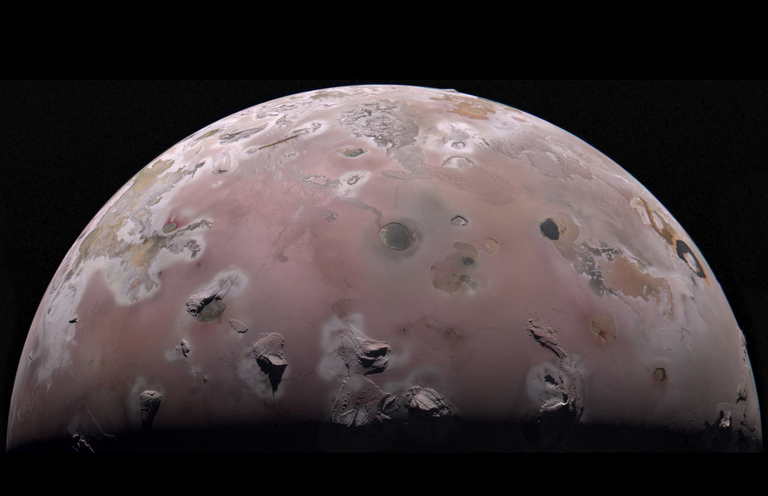Io the strangest moon in the solar system.
Io the strangest moon in the solar system.

Souce
In the image we see the shadows of the mountains, these triangular shadows, some of these mountains, some of the highest, and the curious thing is that they are not united with mountain ranges as they would be here on Earth, but rather they are isolated, they are like islands in amid the plains of sulfur and volcanic ash, we do not know very well how they are formed, why they suddenly rise 10,000 meters high out of nowhere without being linked to a mountain range or some other geological phenomenon is something very strange.
We already knew all this, I have explained it in a rough way, in a simple way, but the news that has now been presented in the scientific magazine nature according to NASA, the scientists of the Juno mission have discovered something more strange about io, it is I suspected that all this volcanism came from an immense ocean of magma that was under the crust, it seems logical, so much heat, so much volcano, the crust had to be very thin and underneath there would have to be only magma, it turns out not, it turns out that volcanoes of io are probably each fed by their own hot magma chamber there is no global magma ocean and this is quite rare.

Souce
Europa's moon also has internal heat due to the same effect of tidal forces, what happens is that since it is a little further from Jupiter, the effect is much smaller, so it can maintain an icy crust, but yes. Under the surface we know that there is water, there is an ocean of liquid water thanks to that gravitational pull of tidal forces, what is happening is that now with this research we are realizing that tidal forces can act in different and different ways as we thought, so perhaps we should rethink what that internal ocean of the moon Europa and other internal oceans of other icy moons that are also heated thanks to tidal forces may be like.
The images without reference were created with AI
Thank you for visiting my blog. If you like posts about #science, #planet, #politics, #rights #crypto, #traveling and discovering secrets and beauties of the #universe, feel free to Follow me as these are the topics I write about the most. Have a wonderful day and stay on this great platform :) :)
0
0
0.000
I think that there is a good chance that there is life on Europa because of the oceans under the ice.
Thanks for your contribution to the STEMsocial community. Feel free to join us on discord to get to know the rest of us!
Please consider delegating to the @stemsocial account (85% of the curation rewards are returned).
You may also include @stemsocial as a beneficiary of the rewards of this post to get a stronger support.